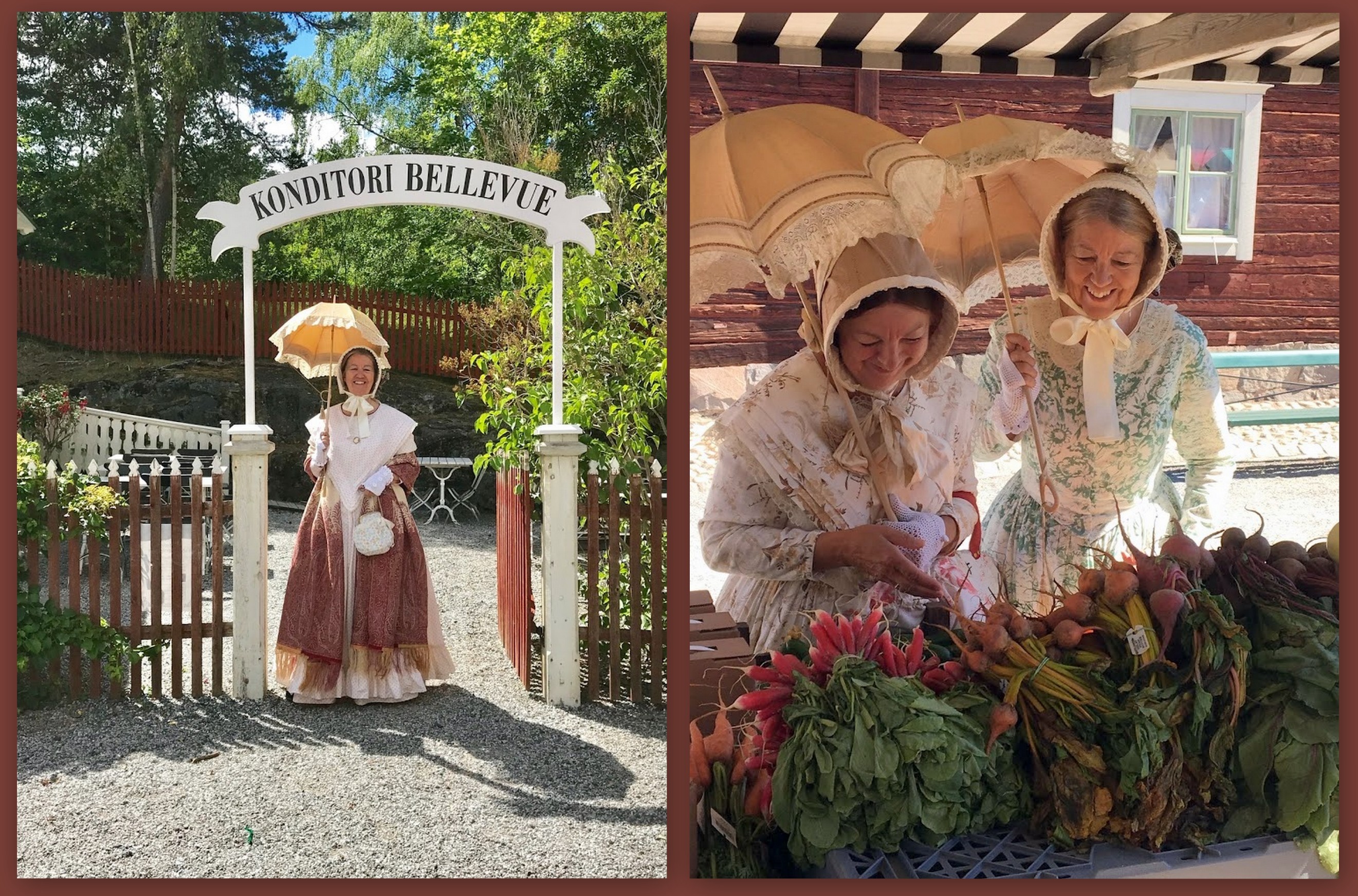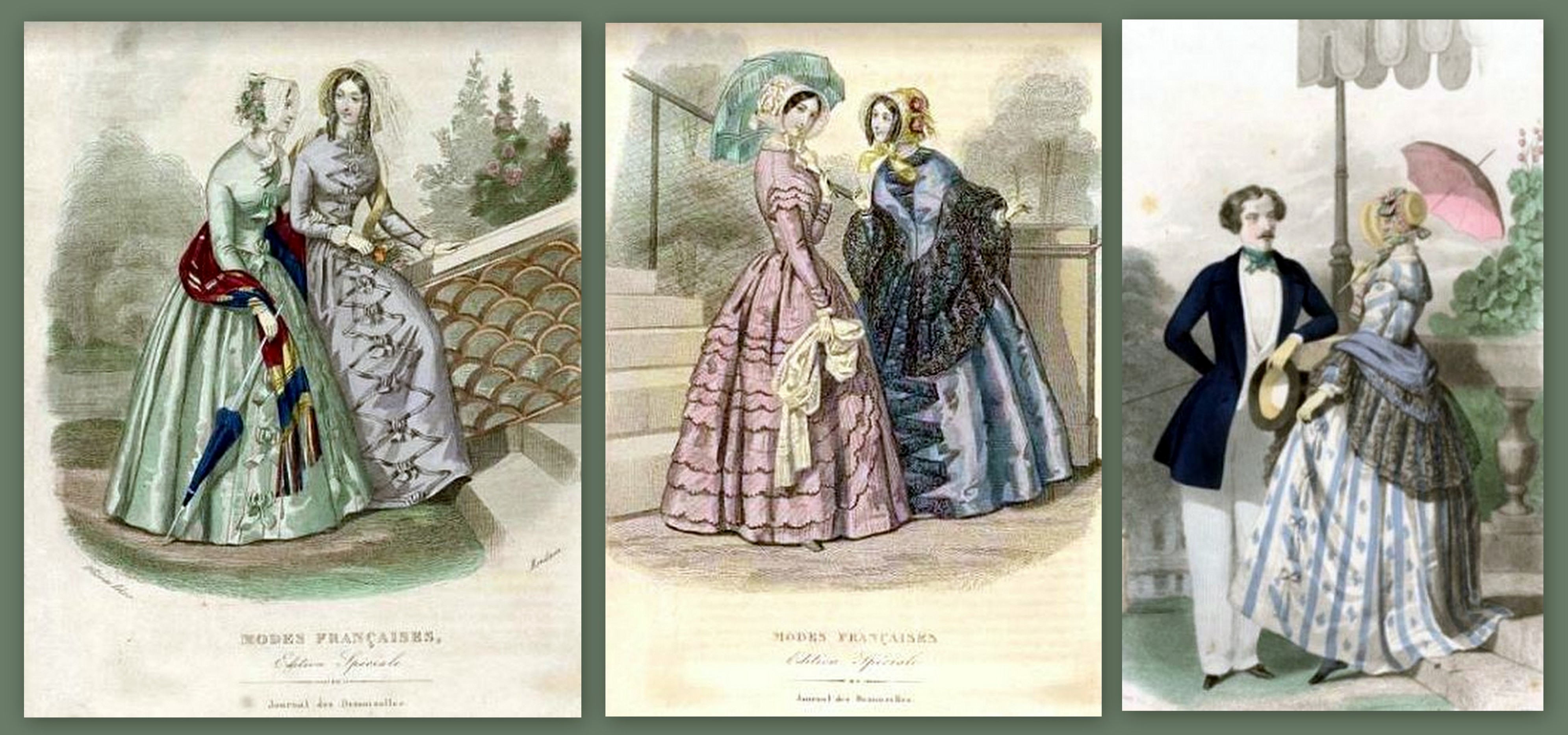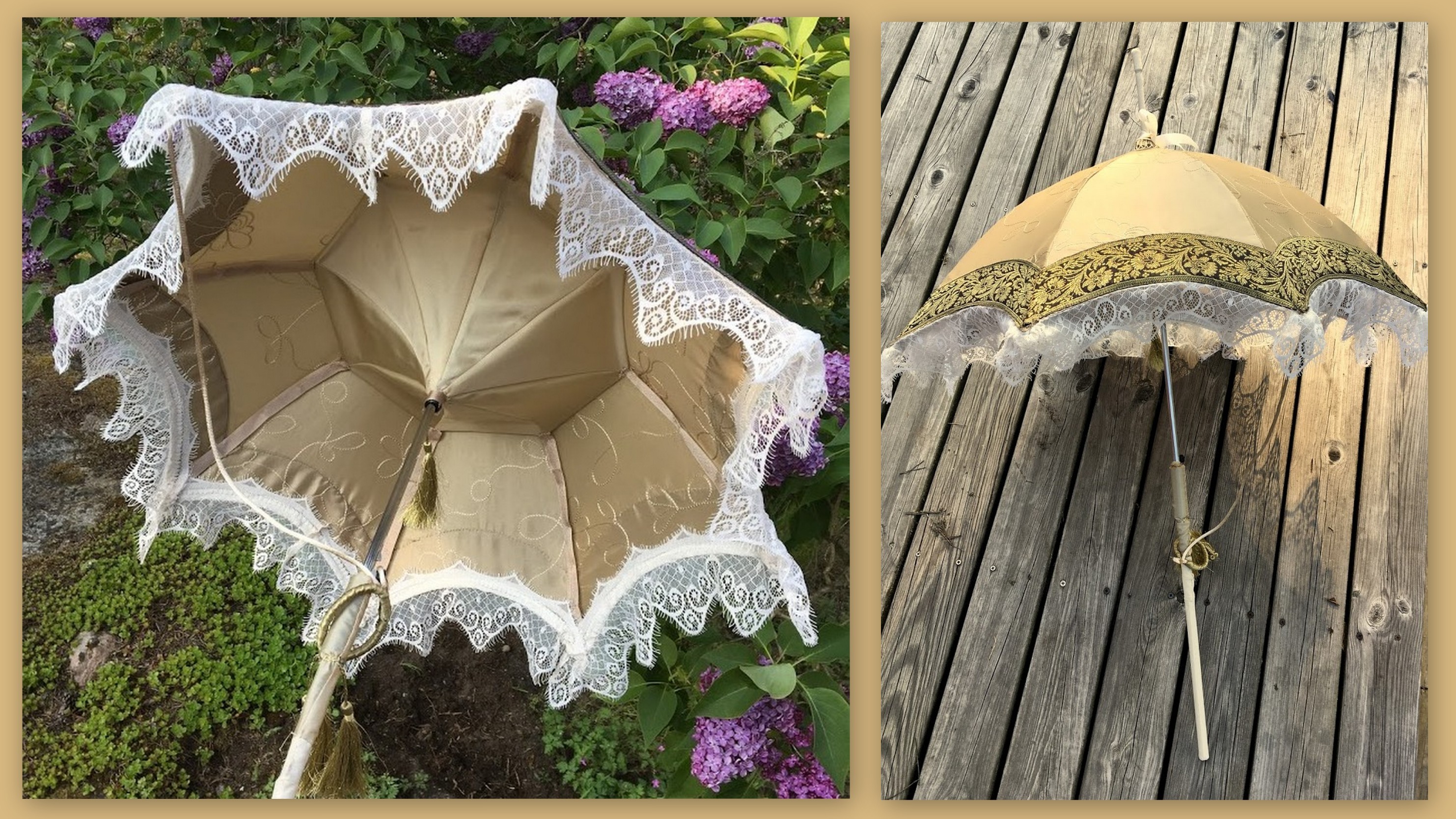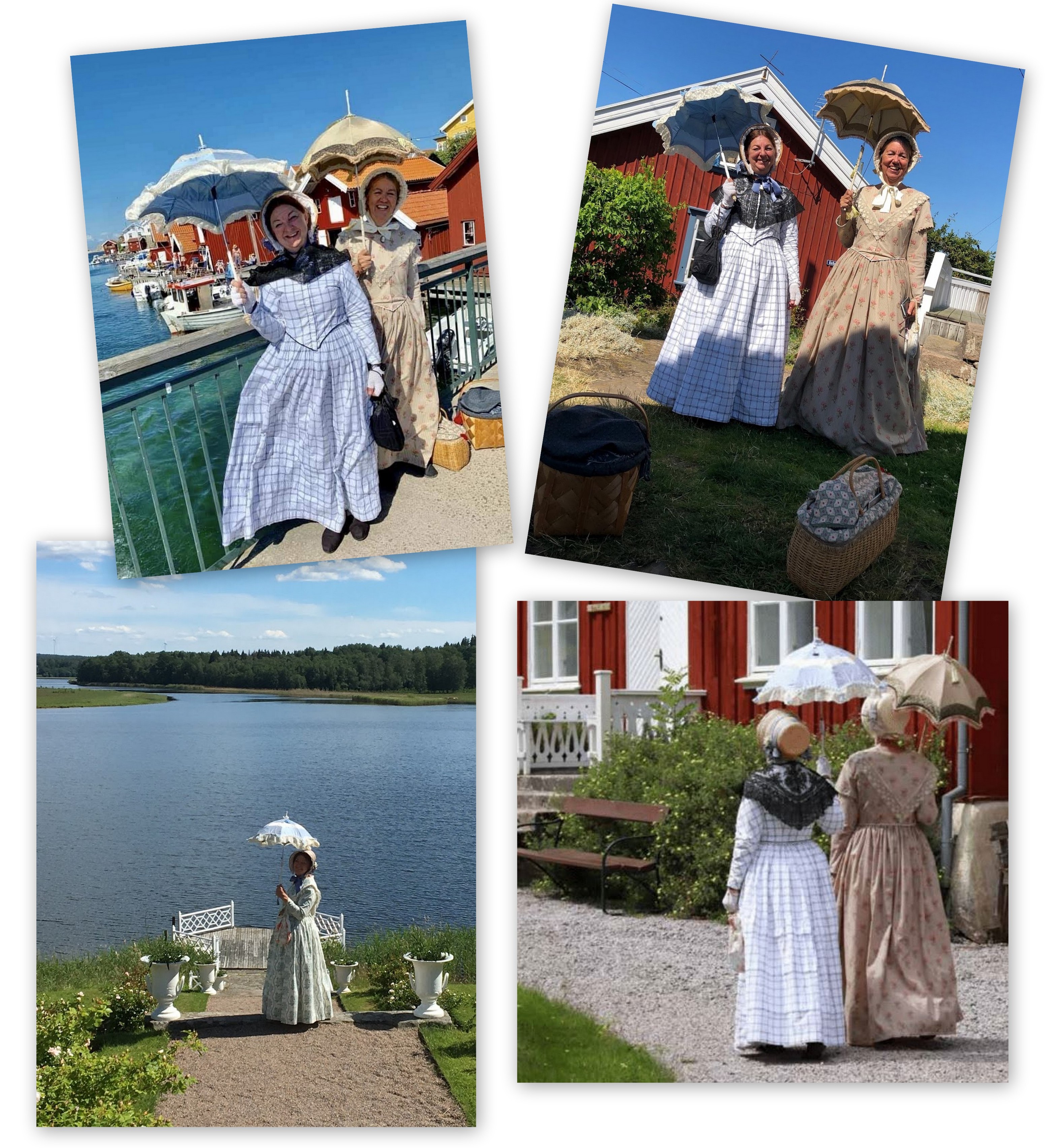How to make a parasol
In June last year, Kerstin and I were busy making 1850s swimwear for our summer sejour on the Swedish west coast. We tested that we could actually swim in the knee-long dresses and wide-legged pants without getting tangled in all the fabric. It was fine. Once I overcame the shock of the cold seawater and started swimming, I felt like a jelly-fish with the fabric floating all around.
The other important project was to make new parasols. In the past, we had used pretty, lace parasols imported from China. Kerstin had also made one before our first journey on Göta Canal.
But from fashion plates, we realized that these wide and flat parasols were not the kind that was used in the 1850s.
A friend of ours had also given us two antique silk parasols from the late-1800s. They were so pretty but also very delicate and fragile. What we needed were some new parasols that we could actually use on our travels.
The parasols of the mid-1800s were very small. They were actually the size of umbrellas that you can buy for kids. Also, the handles were much thinner than those of today’s umbrellas and they looked like they were going through the fabric, sticking out almost 4 inches at the top.
We studied the two antique parasols we had to see how they were constructed.
Kerstin and I kept our eyes open for material that we could use to make our own parasols. One day, I found cheap plastic kid-umbrellas that would be perfect.
We bought several, removed the plastic, and cut off the handle (Figure 2). But what could we use for a new handle? I looked for sticks and pipes and anything that would have the right dimensions. The first thing I found was an old TV antenna that had fallen down from our cottage’s roof (Figure 3). It was perfect. I cut it to the right length and figured out a way to connect it to the child umbrella (Figure 4). But what about the top part (the cap in Figure 6)? I needed a small pipe and looked around the house. Found it! The pipe that is part of a gaslighter (Figure 5) had the perfect dimension.
So this was my first attempt to make a parasol. I decided to make it in a cheap, thin, cotton fabric. I had some antique lace and bought some silk tassel. I also covered the handle with fabric.
My next parasol was going to be in silk fabric. Kerstin was also going to make one. We had already bought the child umbrellas, but we had no more TV antennas!
Back to square one.
We decided to go to Brisak, a store that has everything from clothes and outdoor furniture to kitchenware and kids’ toys. It was at Brisak I had found the child umbrellas. This time we were looking for some pipe or rod or stick that could be used for a handle.
We didn’t get far into the store before Kerstin headed to the isle of fishing gear. Maybe a fishing rod would work?
“Look!” she exclaimed. “I bet that will work!”
She had found a box full of kids’ fishing nets with telescopic pole handles. They were perfect! (Figure 1). They came in blue or hot pink, which didn’t matter as all we needed was the telescopic handle (of course, I still bought pink ones and Kerstin bought blue).
Back home, we started making our silk parasols. This time I paid more attention to the details of the antique parasols, for example, how the inside was also covered in silk fabric to hide all the metal parts. I used some ribbons from an Indian pillow and lace from a thrift store dress.
Kerstin made a beautiful blue one.
Satisfied with the results, we were now ready for our summer sejour on the west coast.









